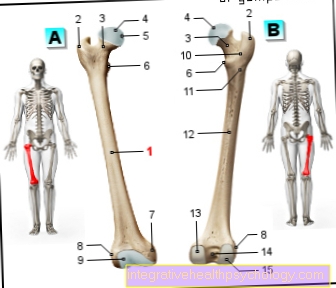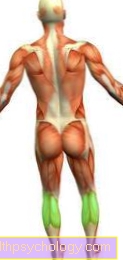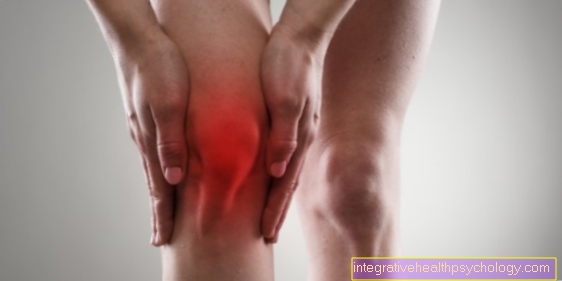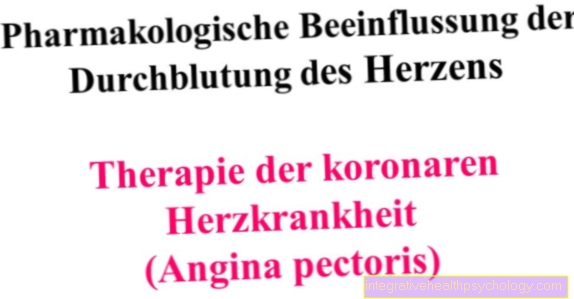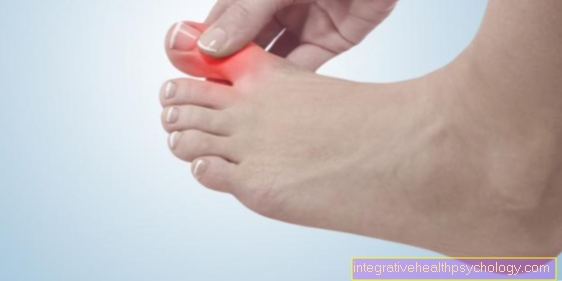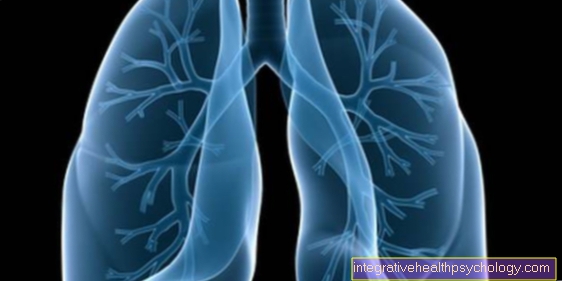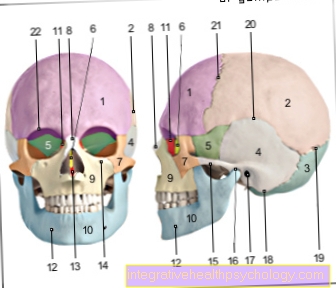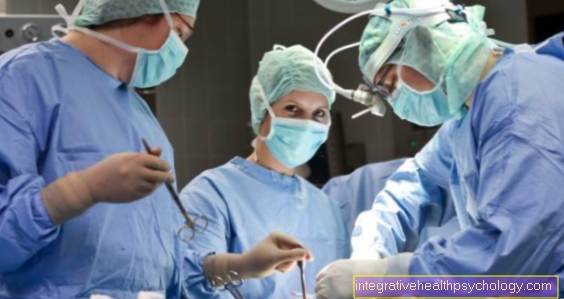The tall stature
Definition - when does one speak of tall stature?
In the medical field, one speaks of tall stature if the person is above the 97th percentile in terms of height - that is, belongs to the largest 3%. Percentiles are growth curves for specific age groups and indicate the normal distribution in the population.
In real height, this means that a man of 18 years of age with a body length of 192 cm and a woman of 18 years of age over 178 cm can be said to be tall.
A definition that is often wrongly used assumes tall stature with the accelerated growth of a person e.g. same in puberty. However, this has nothing to do with tall stature, as this is not defined by the increase in body length over time.

causes
The cause of the large stature is first of all the genetic or family characteristics. As described in the definition, tall stature comprises the largest 3% of men and women. This means that the tall stature does not necessarily have to be pathological, but can be a completely normal condition. For example, if the parents were very tall, the children tend to be the same or even bigger.
In addition to the non-pathological cause, there are a number of genetic syndromes that are characterized by tall stature or in which tall stature is one of the symptoms. The diseases of the endocrine nature (of the endocrine system) that include tall stature include pituitary gigantism, acromegaly, adrenogenital syndrome, precocious puberty or hyperthyroid tall stature.
Find out more about this at: puberty
Another group of causes are numerical chromosomal aberrations. There is an incorrect number of gonosomes (chromosomes X and Y). These include Klinefelter's syndrome (47, XXY), as well as XYY (47) and XXX (47) syndrome. There is also the group of genetic syndromes. In addition to tall stature, there are other syndrome-specific abnormalities. It would be important to mention here the Marfan, Sotos, Wiedemann-Beckwith and Martin-Bell syndromes.
Accompanying symptoms in tall stature
The accompanying symptoms are highly dependent on the cause of the appearance of tall stature.
If someone is tall because of their disposition, then there are no other symptoms.
If the tall stature has endocrine (hormonal) causes, there are changes in other parts of the body.
Read more about this at: Hormones
Pituitary gigantism shows coarsening of the face, enlargement of the hands and feet, and a significantly larger skull.
In adrenogenital syndrome, girls show a male phenotype (appearance). This means that the hair type is more like that of boys and the clitoris is hypertrophied (enlarged) and looks almost penis-like. Menstrual disorders also appear.
Boys with adrenogenital syndrome have an enlarged penis and smaller testicles.
In childhood, boys and girls, and due to the early onset of puberty, are above average. In adulthood, on the other hand, it tends to be even small, since the growth plates close early.
Another dangerous complication is that in addition to the production of sex hormones, the production of aldosterone (salt absorption in the kidneys) is also disturbed. Weight loss and vomiting can then occur.
In the case of chromosome aberrations, depending on where there is a deviation from the normal number, further abnormalities appear.
With Klinefelter's syndrome, boys enter puberty late or not at all, they have smaller testicles, they develop breasts (gynecomastia) and there is a risk of osteoporosis in adulthood. All of these symptoms are caused by a lack of testosterone.
In the XXY and XXX syndromes, the children show weaknesses in their ability to learn, have abnormal behavior and delayed development of motor skills and language.
In Marfan's syndrome, patients show hyperlaxity of the joints, arachnodactyly (spider fingers), frequent heart valve defects, deformations of the chest (funnel chest) and spine (scoliosis), increased incidence of joint dislocations and dislocations of the lens in the eye.
Sotos syndrome becomes noticeable within the first four years of life. The children have an enlarged head (macrocephalus) and very specific changes in the face (a high forehead, wide-spaced eyes (hypertelorism), a pointed chin, and long faces with a high hairline). They also show signs of intellectual disability. Normal growth is usually seen from the age of 5, which is why there is little tall stature in adulthood.
Read our article about the Eye relief
Diagnosis of tall stature
At the beginning of the diagnosis, the focus is primarily on the precise anamnesis.
The height of the parents is asked, as well as other close relatives. It is also important for the doctor to know if there are any other symptoms (as described above) that suggest a syndrome, hormone disorder, or chromosomal aberration.
The exact determination of body size and the relationship between the individual skeletal parts can provide further information about the possible causes. In addition, the percentile curve of the length development should be followed, since the course can provide information on certain diseases. Additional steps include an X-ray of the child's left hand to determine the age of the bones, and a blood test for growth and sex hormones. A chromosome analysis can also be carried out if an aberration in the number of chromosomes is suspected.
You might also be interested in this article: Body size determination
Hormone therapy
Hormone therapy can then be used in children or adolescents if prognostic calculations of the expected body size result in values that are over 185 cm for girls and over 200 cm for boys.
In girls, estrogens are given alone or in combination with gestagens and in boys testosterone. The aim of this hormone therapy is that the growth plates in the bones, the epiphyseal plates, ossify prematurely and that the bones no longer grow in length. The hormones simulate a state that would otherwise only occur when the girls and boys have passed puberty and are already young adults. Hormone therapy is very controversial among medical professionals because of its side effects.
More information can be found here: Woman's hormones
Side effect of hormone therapy
In girls, the hormones can lead to changes in menstruation, weight gain, nausea, general malaise, changes to the breasts, the nipples and the external genitals.
In boys, weight gain, joint pain, severe acne, water retention and, as in girls, changes in the external genitals can occur.
Duration of hormone therapy
The duration of the treatment depends on the size of the calculated tall stature, the age of the child and the annual increase in length.
The therapy can extend over 1 to 2 years. The therapy is ended when the growth plates are closed and accordingly no further growth can take place. In girls there is a daily dose of an estrogen and a cycle-dependent dose of a progesterone for 10-14 days. In boys, the therapy is carried out by injecting a depot testosterone into a muscle (thigh, upper arm) every 14 days. The advice center of an endocrinologist should definitely be visited here.






